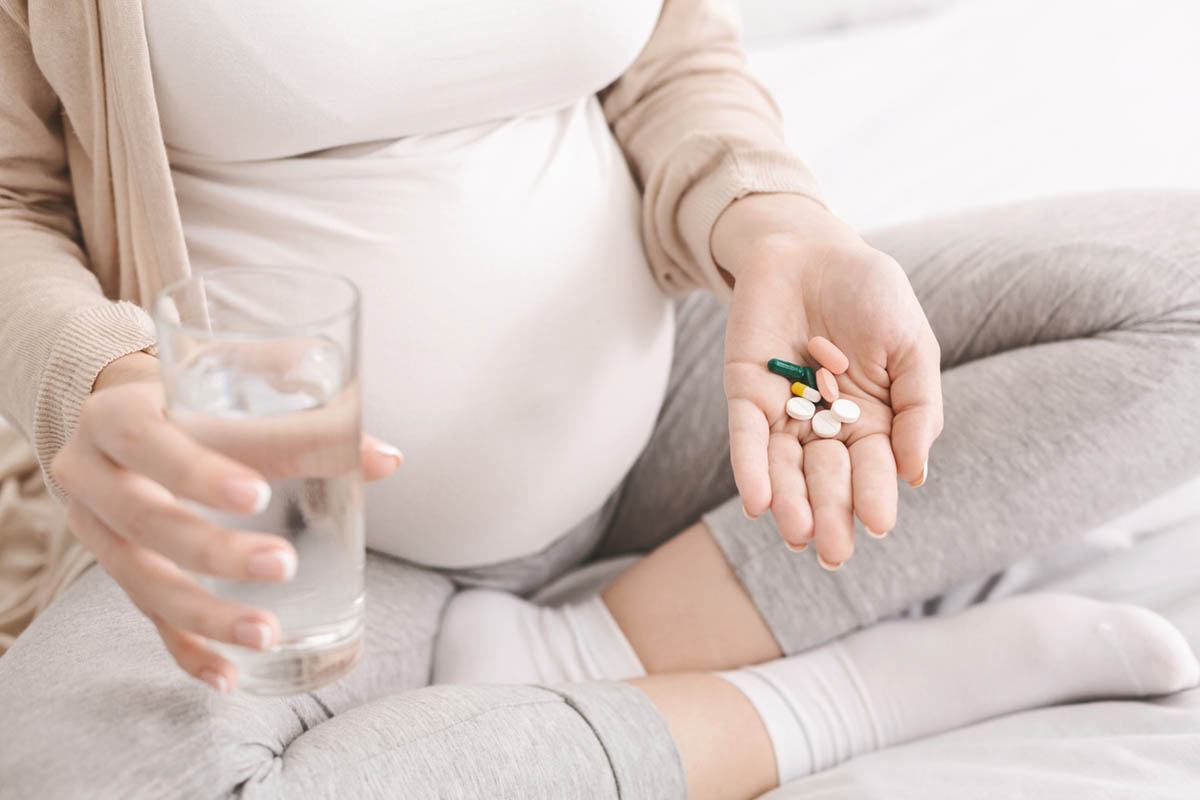Because this piece does not have an abstract, we have provided for your benefit the first 3 sentences of the full text.
For a quarter century, the MacArthur criteria have profoundly influenced how we conceptualize the longitudinal course of a major depressive episode (MDE). The MacArthur Task Force defined remission as a “relatively brief” period when the individual is asymptomatic (ie, “no more than minimal symptoms” of the depressive episode persisting), and was operationalized as a 17-item Hamilton Depression Rating Scale (HDRS) score ≤ 7. Recovery marks the resolution of the current episode and is defined as a state of remission that persists for 6 months or longer.
See article by Judd et al
This work may not be copied, distributed, displayed, published, reproduced, transmitted, modified, posted, sold, licensed, or used for commercial purposes. By downloading this file, you are agreeing to the publisher’s Terms & Conditions.

When Should a Patient Be Declared Recovered From a Major Depressive Episode?
Recovery implies that the remitted state persists long enough and has sufficient consistency that many future months of remission can be anticipated for most patients.
For a quarter century, the MacArthur criteria have profoundly influenced how we conceptualize the longitudinal course of a major depressive episode (MDE).2 The MacArthur Task Force defined remission as a “relatively brief” period when the individual is asymptomatic (ie, “no more than minimal symptoms” of the depressive episode persisting), and was operationalized as a 17-item Hamilton Depression Rating Scale (HDRS)3 score ≤ 7. Recovery marks the resolution of the current episode and is defined as a state of remission that persists for 6 months or longer. Reentry into a full MDE during a state of remission is considered a relapse back into the index episode; a full MDE arising during recovery is considered a new episode, termed a recurrence. In contrast, the DSM has employed different criteria for these categories. Beginning with DSM-III, it has defined recurrent major depressive disorder (MDD) as 2 MDEs separated by at least 2 months.4 Although full remission from an MDE in DSM-III and DSM-III-R was defined as the absence of significant signs or symptoms for 6 months, with DSM-IV the required duration was reduced to 2 months.5 Thus, the DSM-IV and DSM-5 concept of full remission is more akin to recovery, with subsequent MDEs reflecting new episodes, qualifying for the diagnosis of recurrent MDD.
Fifteen years after the MacArthur Task Force recommendations, an American College of Neuropsychopharmacology (ACNP) Task Force1 was created to revisit this terminology. While acknowledging that their recommendations were based on “logic, clinical impression, and consensus,”1 the Task Force recommended that recovery require a 4-month period of sustained remission because placebo-controlled trials employing randomized discontinuation designs found the great majority of reemergent MDEs occur in the first 4 months following the onset of remission. Unfortunately, the boundaries between remission and recovery, and thus the boundary between relapse and recurrence, have never been empirically established, and so we are reliant on these heuristic conceptualizations to guide research and clinical decision making.
One area where there is now compelling data to inform the field is in the use of the HDRS threshold of ≤ 7 to operationally define remission. Zimmerman and colleagues6 have demonstrated that the heterogeneity in the level of functioning within the group of patients defined as “remitted” using the HDRS threshold of ≤ 7 is nearly as great as the heterogeneity in the level of functioning between remitters and nonremitters. The relatively poor agreement on remission status between self-reported questionnaires and clinician-rated scales also adds doubt to the validity of current remission thresholds.7,8 On the basis of analyses of quality of life and psychosocial functioning data, Zimmerman et al9 and others10,11 have proposed a range of 0-2 or 0-5 on the HDRS as a truer indicator of remission from MDD.
In this issue of the Journal, Judd and colleagues12 examine definitions of recovery using data from 31 years of follow-up from participants in the National Institute of Mental Health Collaborative Depression Study (CDS).13 The CDS was a monumental effort that produced data of high quality and completeness that continue to yield valuable clinical insights nearly 40 years after it began. The CDS used weekly symptom ratings to apply the categorical mood disorder diagnoses of the Research Diagnostic Criteria that provided the basis for the disorders included in DSM-III. Consequently, the assessment and categorization of depressive states in the CDS differ from the terminology used today. The CDS divided depressive symptoms into categories of (1) asymptomatic status: no depressive symptoms and return to usual self; (2) subsyndromal depression (SSD): depressive symptoms that do not reach the threshold of minor or major depression; (3) minor depression: symptoms than meet the Research Diagnostic Criteria for minor depressive episode or intermittent depressive episode (which includes dysthymia); and (4) major depression: symptoms meeting full criteria for an MDE.
In prior ground-breaking analyses using the CDS, Judd and colleagues14,15 demonstrated the tremendous importance of residual symptoms of depression in predicting eventual return to a full MDE, a finding now well validated.16 In their current report,12 the authors demonstrate that patients who achieve 4 consecutive weeks of an asymptomatic state fared far better in their recovery than those who never improved beyond the SSD level. Asymptomatically recovered patients had a median time to full MDE recurrence of a little over 4 years, which was 2.5 times longer than the persistent SSD patients. Although there is no established conversion between HDRS scores and the CDS asymptomatic state, Zimmerman and colleagues’ 9 proposed HDRS score range of 0-2 is likely to be congruent with this definition. In contrast, an HDRS score of 7 would certainly qualify in the CDS as SSD, and possibly even minor depression, depending on the symptoms involved.
Judd and colleagues’ 12 argument that an asymptomatic state best defines recovery receives significant support from the outcomes of the 68 patients in the current report who achieved only SSD recovery from their index episode, followed by a relapse that subsequently resolved with an asymptomatic recovery. After this second, complete recovery, these patients demonstrated a longer duration of wellness and lower likelihood of recurrence similar to the patients who recovered from their index episode with asymptomatic status. Thus, it was not necessarily characteristics of the patient, but rather the precision of the fit between patient and treatment that determined long-term outcomes. Unfortunately, we do not know if or how the treatment for these individuals changed between the index and second episodes, but the subsequent full recovery and better long-term course suggest that continuing to work through treatment options until an asymptomatic state is achieved is the appropriate clinical approach.
Although the CDS data paint an overall sobering picture for the future course of MDD patients who incompletely recover from an MDE, this perspective should be tempered by understanding that the majority of patients who entered this study were very ill. Seventy-three percent of the subjects were hospitalized for depression at the time of their enrollment, with a mean index episode length greater than 3 years and a mean extracted HDRS score of 24. Thus, this was overall a severely ill and chronically depressed sample. Outpatients with a lower level of severity and chronicity may have a better long-term prognosis. A recent Japanese study17 reported findings on 95 patients with MDD who were treatment naive at enrollment and who were naturalistically followed for 10 years to evaluate recurrence. Like the CDS, this study17 reported that antidepressant treatment intensity was very low during follow-up, and the follow-up rate through the study was very high (> 85%). However, in this sample17 the outlook was considerably brighter; only 53% of patients had a full MDE recurrence over the 10-year follow-up period, and the median time to recurrence was 103 months. Although this study did not evaluate levels of recovery by asymptomatic versus SSD remission, the wellness periods were substantially better than those observed in the CDS.
Taken together, the data we have today suggest that the number of prior depressive episodes, depressive episode severity, chronicity, and degree of recovery are primary predictors of long-term course. For our patients with MDD, the CDS analyses by Judd and colleagues12 indicate the need to pursue treatment until achieving an asymptomatic state in order to maximize long-term outcomes. Combined with data from other studies,18,19 the low rates of antidepressant treatment and high rates of recurrence in the CDS sample, even among those with asymptomatic recovery, indicate that our sicker patients are very likely to need long-term maintenance therapy in order to stay well.
How should these analyses by Judd and colleagues12 impact our conceptualization of MDD recovery in light of the existing definitions of the MacArthur Task Force2 and ACNP Task Force?1 Judd and colleagues12 here make a compelling argument that until asymptomatic status is achieved for at least 1 month, any return to full MDE criteria actually represents the reemergence of the index episode, not a recurrence. The implication from these analyses is that, just as the emerging data indicate the HDRS threshold of 7 is too high to define remission, this symptom threshold is also inadequate to use as a component of recovery.
Proposals to tighten the threshold for remission (ie, by lowering the required HDRS score) have raised concerns that doing so might give the impression that our treatments for MDD are less effective than previously reported and could undermine public confidence in our treatments.7 But we need to consider whether we are doing our patients a disservice by categorizing mildly symptomatic patients as “recovered,” because when we reach such a threshold we tend to stop optimizing current treatment regimens and begin to discuss with our patients the value of maintenance treatment versus treatment discontinuation. The data from the work of Judd and colleagues12 as well as the work by Zimmerman et al9 suggest such steps may be premature.
Another alternative might be to delink the criteria for remission and recovery. As currently defined, only the duration at a specific symptom level differentiates the terms. By defining recovery using symptom and duration criteria distinct from that for remission, a state of remitted but not recovered can be identified that better informs clinical practice. In the remitted but not recovered state, ongoing treatment is strongly indicated; treatment discontinuation should not be entertained until recovery is achieved. Under this conceptualization, remission would have no predefined time limit. Similar to its use today, remission would end when either relapse occurred or recovery was achieved, but there would be no automatic conversion from remitted to recovered state based on duration alone. Clinicians could discuss the patient’s status as “remission without recovery” just as the phrasing “response without remission” is used today. There are now a large number of trials20-25 that have conducted long-term (≥ 1 year) follow-up of patients who completed a period of acute treatment. The time is ripe for the owners of these and other datasets to finally embark on a concerted and coordinated analytic effort to empirically define the optimal symptom severity and duration thresholds for recovery from MDD.
Author affiliations: Department of Psychiatry and Behavioral Sciences, Emory University School of Medicine, Atlanta, Georgia.
Potential conflicts of interest: Dr Dunlop has received grant support from Assurex, Bristol-Myers Squibb, Forest, GlaxoSmithKline, NIH, Otsuka, Pfizer, and Takeda; and has received consulting honoraria from MedAvante and Pfizer. Dr Rapaport has provided consulting services to PAX, Inc (unpaid) and has been funded by the National Institutes of Health (NIH).
Funding/support: None reported.
REFERENCES
1. Rush AJ, Kraemer HC, Sackeim HA, et al. ACNP Task Force. Report by the ACNP Task Force on response and remission in major depressive disorder. Neuropsychopharmacology. 2006;31(9):1841-1853. PubMed doi:10.1038/sj.npp.1301131
2. Frank E, Prien RF, Jarrett RB, et al. Conceptualization and rationale for consensus definitions of terms in major depressive disorder: remission, recovery, relapse, and recurrence. Arch Gen Psychiatry. 1991;48(9):851-855. PubMed doi:10.1001/archpsyc.1991.01810330075011
3. Hamilton M. A rating scale for depression. J Neurol Neurosurg Psychiatry. 1960;23(1):56-62. PubMed doi:10.1136/jnnp.23.1.56
4. American Psychiatric Association. Diagnostic and Statistical Manual of Mental Disorders. Third Edition. Arlington, VA: American Psychiatric Publishing; 1980.
5. American Psychiatric Association. Diagnostic and Statistical Manual of Mental Disorders. Fourth Edition. Arlington, VA: American Psychiatric Publishing; 1994.
6. Zimmerman M, Posternak MA, Chelminski I. Heterogeneity among depressed outpatients considered to be in remission. Compr Psychiatry. 2007;48(2):113-117. PubMed doi:10.1016/j.comppsych.2006.10.005
7. Zimmerman M, Martinez JA, Attiullah N, et al. Why do some depressed outpatients who are in remission according to the Hamilton Depression Rating Scale not consider themselves to be in remission? J Clin Psychiatry. 2012;73(6):790-795. PubMed doi:10.4088/JCP.11m07203
8. Dunlop BW, McCabe B, Eudicone JM, et al. How well do clinicians and patients agree on depression treatment outcomes? implications for personalized medicine. Hum Psychopharmacol. 2014;29(6):528-536. PubMed doi:10.1002/hup.2428
9. Zimmerman M, Martinez J, Attiullah N, et al. Further evidence that the cutoff to define remission on the 17-item Hamilton Depression Rating Scale should be lowered. Depress Anxiety. 2012;29(2):159-165. PubMed doi:10.1002/da.20870
10. Riedel M, Möller HJ, Obermeier M, et al. Response and remission criteria in major depression: a validation of current practice. J Psychiatr Res. 2010;44(15):1063-1068. PubMed doi:10.1016/j.jpsychires.2010.03.006
11. Romera I, Pérez V, Menchón JM, et al. Optimal cutoff point of the Hamilton Rating Scale for Depression according to normal levels of social and occupational functioning. Psychiatry Res. 2011;186(1):133-137. PubMed doi:10.1016/j.psychres.2010.06.023
12. Judd LL, Schettler PJ, Rush AJ, et al. A new empirical definition of major depressive episode recovery and its positive impact on future course of illness. J Clin Psychiatry. 2016;77(8):1065-1073.
13. Endicott J. Collaborative Depression Study procedures and study design. In: Clinical Guide to Depression and Bipolar Disorder. Arlington, VA: American Psychiatric Publishing; 2013:15-26.
14. Judd LL, Akiskal HS, Maser JD, et al. A prospective 12-year study of subsyndromal and syndromal depressive symptoms in unipolar major depressive disorders. Arch Gen Psychiatry. 1998;55(8):694-700. PubMed doi:10.1001/archpsyc.55.8.694
15. Judd LL, Akiskal HS, Maser JD, et al. Major depressive disorder: a prospective study of residual subthreshold depressive symptoms as predictor of rapid relapse. J Affect Disord. 1998;50(2-3):97-108. PubMed doi:10.1016/S0165-0327(98)00138-4
16. Fava GA, Ruini C, Belaise C. The concept of recovery in major depression. Psychol Med. 2007;37(3):307-317. PubMed doi:10.1017/S0033291706008981
17. Furukawa TA, Fujita A, Harai H, et al. Definitions of recovery and outcomes of major depression: results from a 10-year follow-up. Acta Psychiatr Scand. 2008;117(1):35-40. PubMed
18. Frank E, Kupfer DJ, Perel JM, et al. Three-year outcomes for maintenance therapies in recurrent depression. Arch Gen Psychiatry. 1990;47(12):1093-1099. PubMed doi:10.1001/archpsyc.1990.01810240013002
19. Keller MB, Trivedi MH, Thase ME, et al. The Prevention of Recurrent Episodes of Depression with Venlafaxine for Two Years (PREVENT) Study: Outcomes from the 2-year and combined maintenance phases. J Clin Psychiatry. 2007;68(8):1246-1256. PubMed doi:10.4088/JCP.v68n0812
20. Gelenberg AJ, Trivedi MH, Rush AJ, et al. Randomized, placebo-controlled trial of nefazodone maintenance treatment in preventing recurrence in chronic depression. Biol Psychiatry. 2003;54(8):806-817. PubMed doi:10.1016/S0006-3223(02)01971-6
21. Keller MB, Trivedi MH, Thase ME, et al. The prevention of recurrent episodes of depression with venlafaxine for two years (PREVENT) study: outcomes from the 2-year and combined maintenance phases. J Clin Psychiatry. 2007;68(8):1246-1256. PubMed doi:10.4088/JCP.v68n0812
22. Kocsis JH, Gelenberg AJ, Rothbaum BO, et al. REVAMP Investigators. Cognitive behavioral analysis system of psychotherapy and brief supportive psychotherapy for augmentation of antidepressant nonresponse in chronic depression: the REVAMP Trial. Arch Gen Psychiatry. 2009;66(11):1178-1188. PubMed doi:10.1001/archgenpsychiatry.2009.144
23. Frank E, Kupfer DJ, Perel JM, et al. Three-year outcomes for maintenance therapies in recurrent depression. Arch Gen Psychiatry. 1990;47(12):1093-1099. PubMed doi:10.1001/archpsyc.1990.01810240013002
24. Hollon SD, DeRubeis RJ, Shelton RC, et al. Prevention of relapse following cognitive therapy vs medications in moderate to severe depression. Arch Gen Psychiatry. 2005;62(4):417-422. PubMed doi:10.1001/archpsyc.62.4.417
25. Dunlop BW, Binder EB, Cubells JF, et al. Predictors of remission in depression to individual and combined treatments (PReDICT): study protocol for a randomized controlled trial. Trials. 2012;13(1):106. PubMed doi:10.1186/1745-6215-13-106
Submitted: October 5, 2015; accepted October 6, 2015.
Corresponding author: Boadie W. Dunlop, MD, 12 Executive Park Dr NE, 3rd Floor, Atlanta, GA 30329 ([email protected]).
J Clin Psychiatry 2016;77(8):e1026-e1028
dx.doi.org/10.4088/JCP.15com10437
© Copyright 2016 Physicians Postgraduate Press, Inc.
This PDF is free for all visitors!





